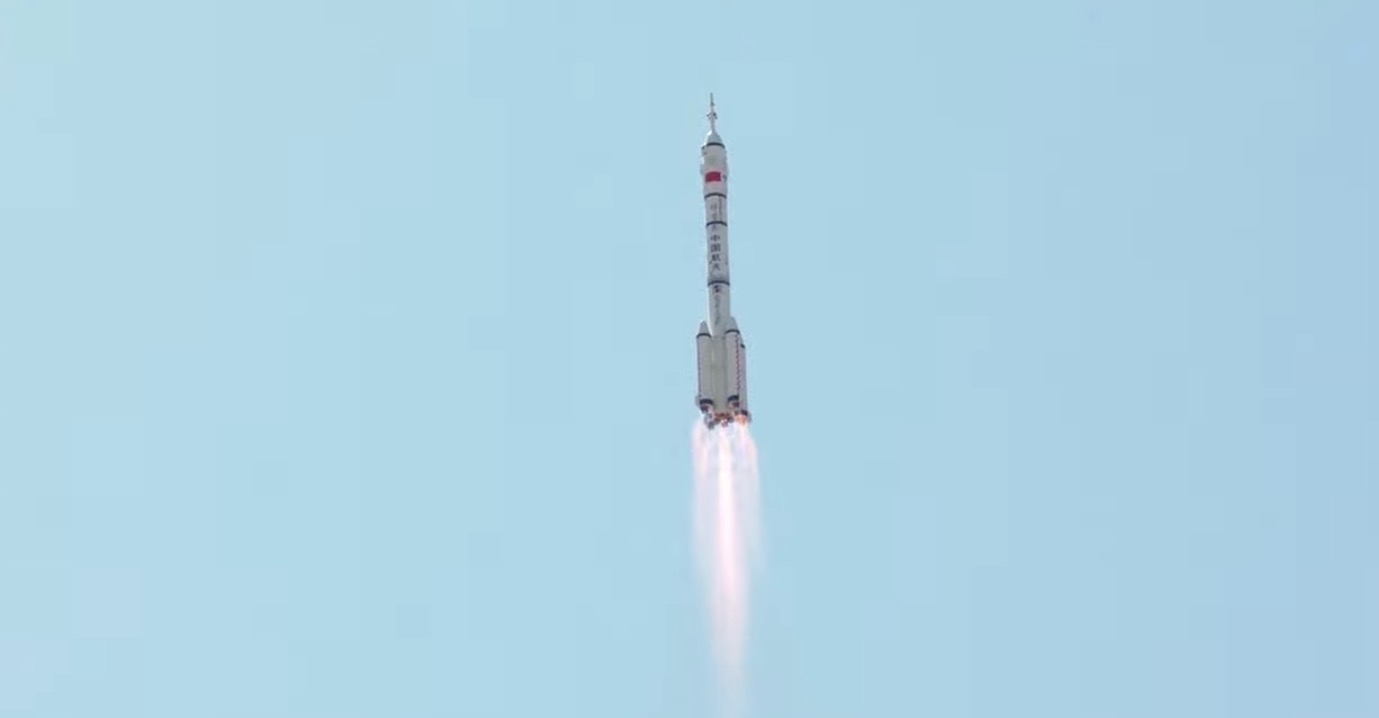
For the second time in two years, China has launched a classified reusable vehicle on a mystery mission to Earth orbit.
A Long March 2F rocket carrying a "test spacecraft" lifted off from Jiuquan Satellite Launch Center in the Gobi Desert on Thursday (Aug. 4; Aug. 5 Beijing time), China's state-run Xinhua news agency reported.
"The test spacecraft will be in orbit for a period of time before returning to the scheduled landing site in China, during which reusable and in-orbit service technology verification will be carried out as planned to provide technical support for the peaceful use of space," Xinhua wrote (in Chinese; translation by Google).
Related: The latest news about China's space program
That's about all we know; Xinhua's update is just two paragraphs long and provides no further detail. But the mystery vehicle is thought to be a robotic space plane, perhaps one roughly the same size as the U.S. Space Force's X-37B, based on the Long March 2F's considerable payload capacity, SpaceNews reported.
China also launched a reusable test spacecraft in September 2020, under a similar cloud of secrecy. That vehicle — which may or may not be the same one that lifted off on Thursday — stayed aloft for two days and released a small payload in orbit before coming down for a landing in China, SpaceNews noted.
For comparison, the X-37B space plane has been orbiting Earth for more than 800 days on its latest mystery mission, the sixth for the X-37B program. The Space Force is thought to have two of the 29-foot-long (8.8 meters), Boeing-built space planes in its fleet.
Get the Space.com Newsletter
Breaking space news, the latest updates on rocket launches, skywatching events and more!
The Jiuquan launch was part of an extremely busy day in spaceflight. Thursday featured six rocket launches, starting with Rocket Lab's lofting of a spy satellite for the U.S. National Reconnaissance Office at 1 a.m. EDT (0500 GMT).
Also on Thursday, a United Launch Alliance Atlas V launched a missile-warning satellite for the Space Force; Blue Origin sent six people to suborbital space; China launched the TECIS 1 Earth-observation satellite; and South Korea's Danuri moon probe lifted off atop a SpaceX Falcon 9 rocket.
Mike Wall is the author of "Out There" (Grand Central Publishing, 2018; illustrated by Karl Tate), a book about the search for alien life. Follow him on Twitter @michaeldwall. Follow us on Twitter @Spacedotcom or on Facebook.
Join our Space Forums to keep talking space on the latest missions, night sky and more! And if you have a news tip, correction or comment, let us know at: community@space.com.

Michael Wall is a Senior Space Writer with Space.com and joined the team in 2010. He primarily covers exoplanets, spaceflight and military space, but has been known to dabble in the space art beat. His book about the search for alien life, "Out There," was published on Nov. 13, 2018. Before becoming a science writer, Michael worked as a herpetologist and wildlife biologist. He has a Ph.D. in evolutionary biology from the University of Sydney, Australia, a bachelor's degree from the University of Arizona, and a graduate certificate in science writing from the University of California, Santa Cruz. To find out what his latest project is, you can follow Michael on Twitter.









